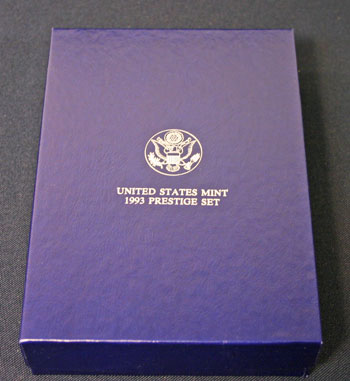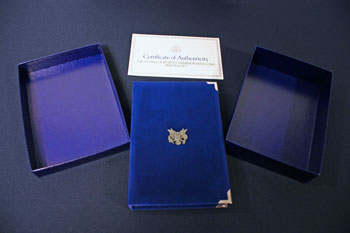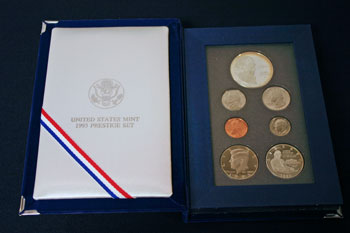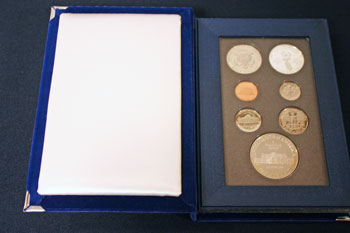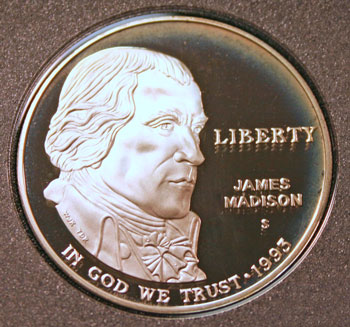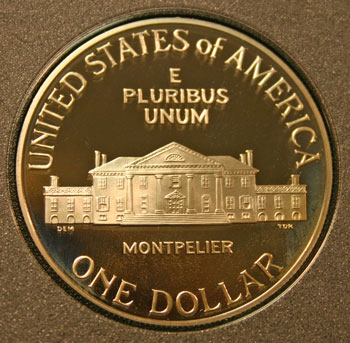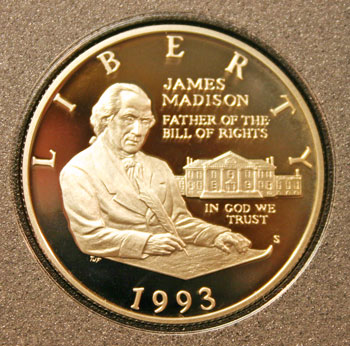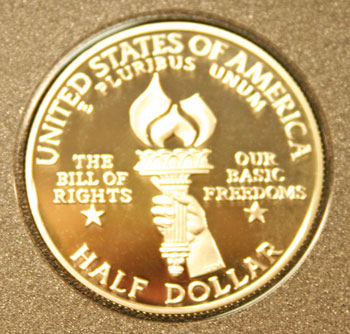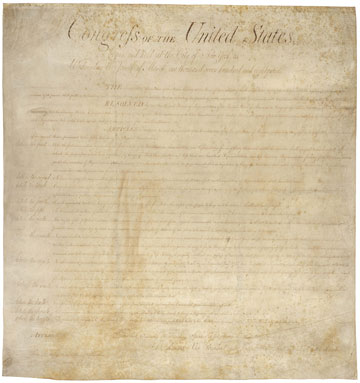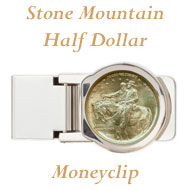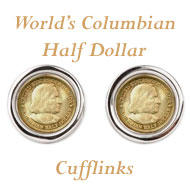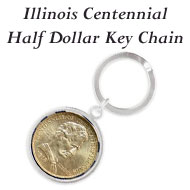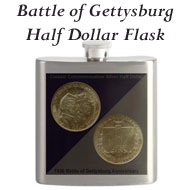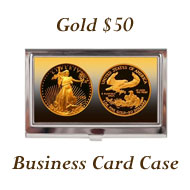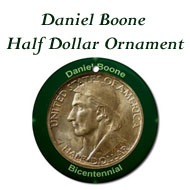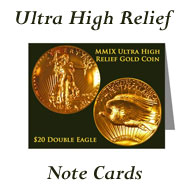|
Greater Atlanta Coin Show |
||
| coin show and coin information for collectors and investors | ||
Coins - 1993 Prestige SetIn the 1993 Prestige Set, the US Mint recognized the Bill of Rights and the Father of the Bill of Rights, James Madison, with two commemorative coins - both silver. The size and outer format of the packaging remained the same as the recent years with only minor changes in the colors used for the outer box, inner book and Certificate of Authenticity. The 1993 Prestige Set contained seven proof coins, five standard coinage, a commemorative silver dollar and silver half dollar honoring Madison's work with the Bill of Rights. The coins equal $2.41 in face value. The US Mint initially sold the 1993 Prestige Set for $57 which would be $85.85 in 2010 money using the Bureau of Labor Statistics' Inflation Calculator. The deep royal blue of the outer box highlights the silver print of the heraldic eagle emblem and the inscription "UNITED STATES 1993 PRESTIGE SET." The two-piece box measures 5 1/4 inches by 7 3/8 inches by 1 5/8 inches when closed.
The two-piece outer box contains the padded book holding the seven coins and their corresponding Certificate of Authenticity. Plush royal blue velvet covers the outside of the coin book, and metal brackets protect the velvet covered corners of the book. On the front cover, the metallic decoration in the center of the book shows the heraldic eagle emblem.
Inside the front cover, off-white padded fabric highlights the silver print of the heraldic eagle and the inscription "UNITED STATES MINT 1993 PRESTIGE SET." A red, white and blue ribbon attaches to form a triangle across the lower left. This ribbon can be used to secure the Certificate of Authenticity inside the set. On the right, plastic in two shades of dark blue holds the seven coins securely. The coins' obverse and reverse designs can be seen behind clear acrylic. The silver commemorative silver dollar takes the important top position with the commemorative silver half dollar taking the lower right position.
Turning the book to view the reverse, the inside back cover contains off-white padding to protect the coins' plastic and acrylic holder.
In addition to being a strong and vocal participant during the Constitutional Congress (see the 1987 Prestige Set commentary), James Madison was instrumental in writing the Bill of Rights. During the ratification debates within the states about the Constitution proposed by the Constitutional Congress, many detractors were concerned the resulting government would become oppressive to the states and to individuals. Many of these people had experienced British rule and fought in the revolutionary war. They did not want to endure loss of individual liberties similar to those lost to the British in the past. Initially one of the most supportive men of the Constitution and a member of the Constitutional Congress, George Mason of Virginia was so disappointed with the lack of rights that he refused to sign the Constitution. He became the Constitution's most vocal detractor and continued his quest for the people's rights. Several states asked for a "bill of rights" during their ratification process, and others ratified with the understanding that a "bill of rights" would be forthcoming. In 1789, the First Congress proposed twelve articles to the states to address their most frequent and most pressing concerns. Articles one and two were not ratified, however articles three through twelve were approved as the first ten amendments to the Constitution and became known as the Bill of Rights (see below). James Madison as part of the First Congress helped frame and ensure the Bill of Rights passed. As he wrote the articles, James Madison depended heavily upon the Virginia Declaration of Rights written by his fellow Virginian, George Mason. In honor of the Father of the Bill of Rights, the obverse of the commemorative silver dollar has a simple yet profound portrait of James Madison. Inscriptions on the obverse include: "LIBERTY," "JAMES MADISON," "IN GOD WE TRUST" and "1993."
The reverse of the commemorative silver dollar shows the front of Madison's home. The oldest of ten children, Madison grew up and lived in this home, called Montpelier, all of his life. In addition to the inscription for the home, the coin's reverse also says, "UNITED STATES OF AMERICA," E PLURIBUS UNUM" and "ONE DOLLAR."
The commemorative clad half dollar provides an image of Madison writing the Bill of Rights with his quill pen with a view of Montpelier in the background. "LIBERTY," "JAMES MADISON," "FATHER OF THE BILL OF RIGHTS" and "IN GOD WE TRUST" along with "1993" are shown on the half dollar's obverse.
The coin's reverse provides a view of the Torch of Freedom. Perhaps more important are the inscriptions of "THE BILL OF RIGHTS" to the left and "OUR BASIC FREEDOMS" to the right of the torch. Along the rim above the torch shows "UNITED STATES OF AMERICA" and "E PLURIBUS UNUM" with "HALF DOLLAR" below the torch.
Some historical references call Madison the Father of the Constitution. Madison claimed that the Constitution was "the work of many heads and many hands." And though he was a strong contributor to the Constitution, he was more essential to the work with the Bill of Rights. The image below shows the Bill of Rights. Click on the image for a larger view. Plus, a transcript of the Bill of Rights can be found on the National Archives web site. After being instrumental in the work on the Constitution and the Bill of Rights, Madison later became the fourth President of the United States serving from 1809 to 1817. After his death in 1836, one of his personal notes stated, "The advice nearest to my heart and deepest in my convictions is that the Union of the States be cherished and perpetuated." With all his efforts on behalf of the Union during his time and the benefits we still have today, James Madison richly deserves the honor and recognition of the commemorative coinage. |
Coin Shows GACS Numismatic Shoppe Contact Us Privacy Site Map |
© Copyright Atlanta Coin Expositions, 2008-2016. All Rights
Reserved.
Several of the links on the pages within this web site go to affiliate vendors.
A vendor affiliation can mean a small monetary compensation to the web site owner.

